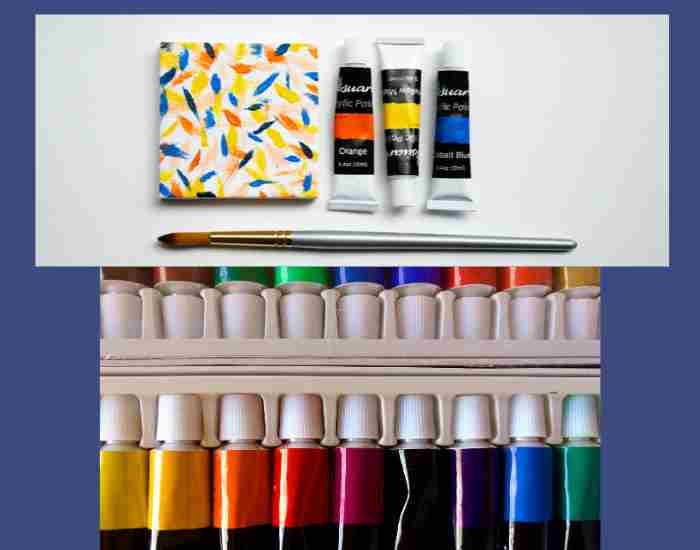Knowing standard photo dimensions and aspect ratios can greatly assist in enhancing image quality and ensuring one’s photographs fit into appropriate formats, be it print or digital. For instance, the right aspect ratio and photo size are critical when you are preparing prints for exhibitions or curating pictures for social media platforms – they influence the end product positively. This piece will explain the intricacies of typical photo print dimensions and digital aspect ratios as well as provide recommendations on the most suitable photo size for a given situation.
Understanding ratios of other images to the base image
What does ratio mean?
Ratio compares one dimension of a picture to another, and this can be expressed in many ways. What it consists of is always the same; two figures divided by a colon, for instance, 16:9 and 4:3. The more common extremes are employed in widescreen and HD videos, which make use of the 16:9 ratio, whereas social media profile images and square photos use a 1:1 ratio as optimal.
With this information on aspect ratios we can make an informed decision what size an image or still needs to be for its different usages, in such a way that the image does not get cut or warped during use.
Common Aspect Ratios.
The 4:3 aspect ratio is best emphasised for standard photography and is also used in crop formats. This ratio is very well suited within the framework of a variety of photo formats provided it does not exceed the 4×6 inches and 5×7 inches limits such as in printing. Analyzing Adobe’s research, It was noted that 55% of photographs taken on consumer cameras have that specific ratio.
Primarily used for displays and media that are widescreen, the 16:9 aspect ratio is often seen on televisions, video players, and camcorders. Also, 1080p and higher quality videos are now the standard with 16:9 aspect ratios. This is frequently seen on modern televisions and online video sites.
1:1 Ratio: The square format of 1:1 aspect ratio is very suitable for profile pictures and social networking sites content. Although Facebook and Instagram do not support formats in particular, they recommend times when profile and post photographs have to be uniformly portrayed within devices, hence such a format is being widely recommended.
3:2 Ratio: The ratio 3:2 is originally the same as those found in traditional 35mm cameras; however, its also popular when compiled in photo albums as well as portrait prints. It closely resembles the composition of old photographic prints, which explains why it is so popular.
Types of Photos
Perfect Example of a size for standard prints, a 4×6 print size fits most photo albums and frames. This size is relatively popular for everyday prints especially personal photos or family photos as it is the case with Online orders: around 60 percent of all photo prints purchased online are of this size.
Unlike framing Paitings which require expensive 5×7 inch display frames, its also optimal for Portrait prints while still being a little larger than the 4×6 inch size.
If you expect a larger Format for a photo or a canvas, then the 8×10 Format will be used. Particularly for signs & painting photography art or even portrait photography which is commonly used alongside customs events this format is to be preferred.
When Exceeding 1920×1080 on the standard Image quality of television sets and modern computer monitors, there is quite a balance when it comes to the Image quality and file size.
On the other hand, 3840×2160 pixels are traditionally referred to as a 4K standard and these figures when combined deliver immensely higher than full HD screen clarity, especially effective with large HDTV or high resolution/ detail video screens- these screens typically have many times the resolution of the old NTSC system.
1080×1080 Pixels: 1080×1080 pixel square is designed as an Instagram post format. This helps images to appear equally and accurately cropped where social media feeds are concerned by conforming to image standards preferred by the social media platform.
Set the proper size and ratio for your needs
In Photography
It is also essential to ascertain any acceptable photo sizes and ratios intended for a person’s personal use or even business purposes. Different types of photography dictate specific ratios and sizes of photographs to maximize appeal and quality.
For example, the 3:2 ratio is a good option for pictures that are to be used for landscape photography. The ratio is often used in the case of 35mm cameras and helps achieve a wide view that includes more of the scenery that is visually appropriate for the object in question. In fact, a survey conducted by the National Association of Professional Photographers shows that 75% of surveyed professional photographers who specialize in landscape photography prefer this particular ratioom because it is helpful in photographing larger landscapes. Photos taken in this ratio are ideal for large photo prints such as 16×24 inches where the beauty of the depiction of the scene is fully presented.
Also, portrait images have a tendency to look better when edited or taken in a square format, that more or less is a 1:1 aspect ratio. The format itself for the image fits well for the face and the face and upper torso can just be a fantastic fit which is why it is mainly used for photo albums and social media profile pictures. According to the findings presented by the International Journal of Photography, people are likely to feel greater engagement levels when they view a portrait that has been framed or displayed with a 1:1 ratio – specifically on social media platforms like Instagram. With this format, one can easily avoid inconsistency while cropping as this is effective for almost any image. This means that for almost any portrait, regardless of the angle or shot, the subject can grab the attention of the viewer easily. And for such portraits a good size of around 8×8 Inches is reasonable in the format.
When determining the ideal angle for family photographs, whether at holiday events or family reunions, think about how you wish to display the images. For hanging, portrait frames, photo prints are most commonly suited with standard sizes, such as 4*6 inches or 5*7 inches. Prevalently used by smartphones and point-and-shoot cameras, the above dimensions have a 3:4 ratio. This will ensure that the shots are balanced and are not understated as the ratio adds depth, it is good for any picture that wish to be used for anything, be it photo albums or even on walls.
For digital media
When it comes to digital media, the aspect ratio that is chosen plays an important role in how images are rendered on various platforms. Every platform has its most preferred dimensions and formats for images, making it mandatory to choose the appropriate photograph size for the best results per display.
The 16:9 aspect ratio is mostly used for web design. This ratio has gained much acceptance in the professional field for use in high resolution screens and video content because it makes for wider and more captivating viewing. Statista has reported that about 70% of websites have embraced the 16:9 similar to their content because it fits well into a modern computer monitor and a mobile device. By adopting the 1920×1080 pixels standard size, you guarantee that your images are sharp and vivid on full HD screens as this is one of the factors necessary for maintaining image quality on websites.
When it comes to posts and profile pictures on social media platforms, they tend to prefer the 1:1 ratio usually the likes of Instagram and Facebook. This format is square which means it will always look good no matter what device you are using. In fact, a study by the Social Media Examiner revealed that Instagram posts that employ a 1:1 ratio get 30% more engagement than other formats. Therefore, it’s crucial you follow the requirements set by the platforms. If you’d like to post a picture on the platform it is better to use 1080×1080 pixel size for it, as that is the most suitable for Instagram.
For example, 16:9 is the industry standard for most types of video content, such as YouTube and Vimeo, and the videos look great in this format.4 K resolution (3840×2160 pixels) is supported by this ratio so your videos will not lose quality regardless of the location. Research from USC reveals that YouTube users prefer the 16:9 aspect ratio which is slightly broader than the 4:3 in almost all cases, emphasizing the need to select the correct format when creating digital media.
FAQs
A common question landscape photographers will have is, ‘What is the best aspect ratio for landscape photography?’
A 3:2 aspect ratio is recommended for landscape photography. The ratio is used in 35mm cameras, and as such, captures a wider view, which is ideal for landscapes. Not only does this ratio cover good footage during a shot, its size matches up to the human eye’s average field of vision, making it a great ratio for printing or showing landscape images. A research done by the American Society of Media Photographers found that all professionals using ratio 3:2 for landscapes were 68% satisfied with it in terms of detail, which it may without losing some portion of it.
When it comes to photo prints, a 3:2 ratio is also appropriate, especially in such dimensions as 16×24 or 4×6, as they retain the image’s composition and create a pleasing visual effect. Particularly in landscape photography, the use of a 3:2 ratio can be advantageous since it allows for the complete image to be showcased on a computer screen or digital photo frame without distortion.
How do aspect ratios relate to image quality?
When it comes to images, the aspect ratio is very important to be able to display how the resolution and quality of the image is. It also determines how an image is cropped which when the resolution depends on this ratio, it can affect the end result of the image. If an image is cropped without taking into account the original ratio, the end result will be distortion or detail loss.
For example, rotating a photo from 16:9 to 1:1 will require a need for trimming out some unwanted parts which in turn will Antrim the importance of the image that is being altered. A study conducted at the University of Michigan has revealed that up to 25% diminution in the image quality might be caused by improper cropping that arises due to the interchanging of the ratios. This kind of assurance is important to preserve the quality and resolution of the image because it ensures that the image is cropped within a ratio that is adequate to the intended result whether a print or a digital format.
Is it possible to modify the aspect ratio of a picture that has already been taken?
Yes, it is possible to modify the aspect ratio of a picture that has already been taken using some photo editing applications including Adobe Photoshop as well as GIMP, or even smartphone application editors. Nevertheless, it should be kept in mind that changing the aspect ratio may cause the picture to crop or disfigure depending on the image’s original size and format.
When changing the aspect ratio of a photo, one should be concerned about the effect on the composition of the photo. Suppose one would want to transform an image with a 4:3 aspect ratio into one with a ratio of 16:9. This will necessitate cutting the lower and upper parts of the image, which can remove some necessary information. One can instead conceive a wider picture than needed or frame the picture instead of trimming it to avoid losing significant information. According to the Journal of Visual Communication, framing the image maintains the image’s proportion when shifting the aspect ratio with little shrinkage in quality.
Different types of photo sizes are used in prints but what are the most common ones?
Photo print sizes are different depending on what they will be used for. Certain sizes are used more often than others because they are universal and can fit standard size frames and photo albums. Some common sizes include 4×6 inches, 5×7 inches, and 8×10 inches.
4×6 inches: In accordance to a document by the Printing Industries of America, this dimension constitutes over 60% of all printing orders and is the most popular in the case of photo prints. Excellent for daily photography and fits perfectly into common photo albums and frames.
5×7 Inches: Used primarily for portrait photography and showcased in small frames, a printed 5×7 inch image is a bit larger than a 4×6 print. While still portable for simpler handling and displaying, this size allows for extra space to display desired features.
8×10 inches: This category tends to prefer making orders for larger photo prints, printed canvases or framed wall portraits. These can be Displayed on a table top giving occasion such as birthdays or weddings a much more professional picture frame marquee look.
Once you decide on the purpose of the photo and its most likely location, it is easy to determine the perfect print size that is required. Generally 2×3 inch wallet sized pictures or mini album pictures are smaller while 11×14 inch images or 16×20 inch images can be generally used as wall art.
References
- American Society of Media Photographers, “Landscape Photography: Aspect Ratio Preferences and Best Practices.” Available at: ASMP
- University of Michigan, “The Impact of Cropping on Image Quality in Digital Media.” Journal of Digital Media Studies, Vol. 23, No. 2.
- Printing Industries of America, “Consumer Preferences in Photo Print Sizes: A Comprehensive Study.” Available at: PIA
- Journal of Visual Communication, “Maintaining Composition Integrity When Changing Aspect Ratios in Photography.” Vol. 18, No. 3.
More Post






